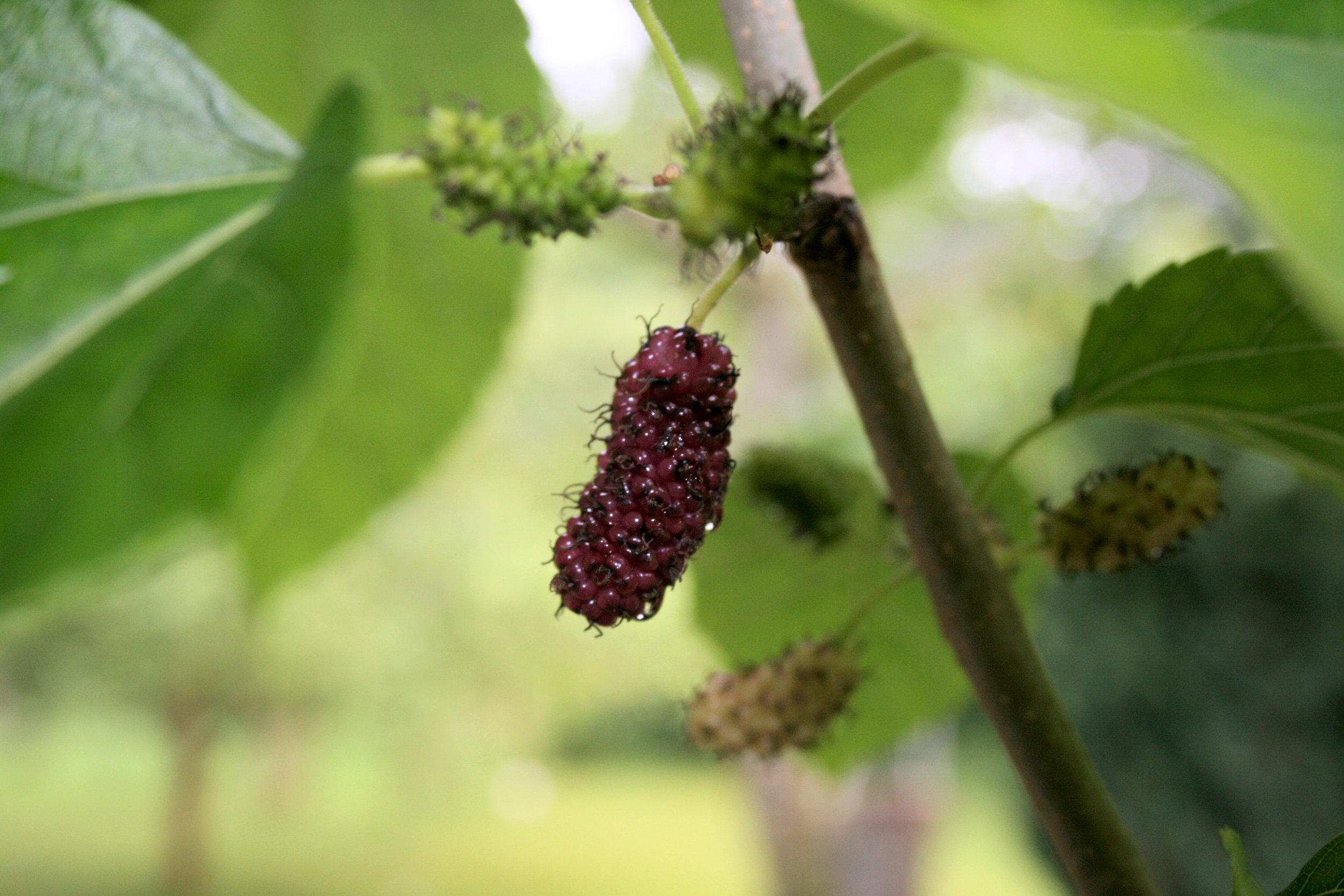Mulberry
No. in Woodland Park: 7
No. in good health: 1
No. in fair health: 4
No. in poor health: 2
Morus rubra, commonly known as the Red Mulberry, is a species of mulberry native to eastern North America. It is found from Ontario and Vermont in the north down to southern Florida, and west to southeast South Dakota and central Texas.
Common in the United States, it is listed as an endangered species in Canada, and is susceptible to hybridization with the invasive White Mulberry (M. alba), introduced from Asia.
Red Mulberry is a deciduous tree, growing to 10–15 m tall, rarely 20 m, with a trunk up to 50 cm diameter. The leaves are alternate, 7–14 cm long and 6–12 cm broad, simple, broadly cordate, with a shallow notch at the base, typically unlobed on mature trees although often with 2-3 lobes, particularly on young trees, and with a finely serrated margin. The upper surface of the leaves is noticeably rough, similar in texture to fine sandpaper, and unlike the lustrous upper surface of the leaves of White Mulberry (M. alba). The underside of the leaves is covered with soft hairs. The leaf petiole exudes milky sap when severed. Red Mulberry is hardy to subzero temperatures, relatively hardy to drought, pollution, and poor soil, though the White Mulberry is hardier. The flowers are relatively inconspicuous: small, yellowish green or reddish green, and opening as leaves emerge. Male and female flowers are usually on separate trees although they may occur on the same tree.
The fruit is a compound cluster of several small drupes, similar in appearance to a blackberry, 2–3 cm long, when it is ripening it is red or dark purple, edible and very sweet with a good flavor.


